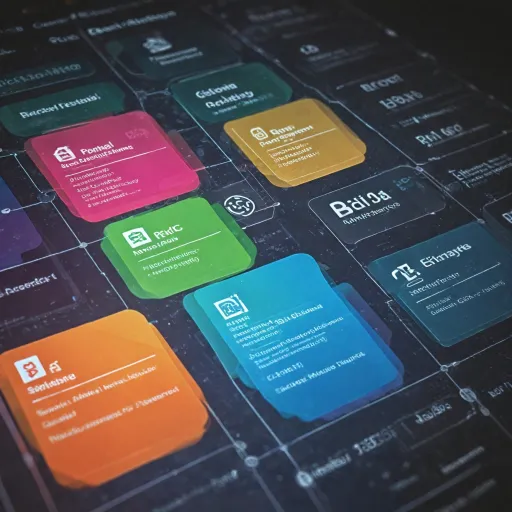
Understanding the disc personality test pdf
What is a DISC Personality Test PDF?
The DISC personality test is a widely used assessment tool in human resources. It helps organizations understand individual behavior styles by categorizing people into four main personality types: Dominance, Influence, Steadiness, and Conscientiousness. A DISC personality test PDF is a digital format of this assessment, making it easy to distribute, complete, and review results across teams or departments. Many organizations use a free or paid version of the DISC assessment to get a better sense of team dynamics and personal strengths.
How Does the Assessment Work?
The DISC assessment is based on a series of questions that measure how individuals respond to specific situations. The answers are analyzed to create a DISC profile, which offers insights into a person’s communication style, decision-making approach, and preferred work environment. The process is straightforward: employees complete the test, and the results are compiled into a report. This report provides guidance for HR professionals to support coaching, recruitment, and employee growth initiatives.
Why Use a DISC Personality Test in HR Analytics?
Integrating DISC personality insights into HR analytics allows organizations to:
- Identify strengths and development areas for each employee
- Enhance team relationships and collaboration
- Support data-driven recruitment and onboarding
- Provide targeted coaching and personal development plans
When assessment results are complete, HR professionals can use this data for deeper analysis of team dynamics, recruitment strategies, and employee development. For a closer look at how workforce analytics platforms can support these efforts, explore the key features of workforce analytics for HR professionals.
Key Considerations for Using DISC Assessments
Before implementing a DISC personality test PDF, it is important to ensure the assessment is reliable and valid for your specific organization. Consider how the insights will be used and who will have access to the results. Ethical use and privacy are essential, especially when handling personal data. As you move forward, you will see how these insights can be integrated into broader HR analytics strategies, from analyzing team dynamics to supporting employee growth and development.
Integrating disc results into HR analytics
Turning DISC Assessment Data into Actionable HR Insights
Once you have a complete DISC personality test PDF, the next step is to translate the assessment results into meaningful HR analytics. This process helps organizations move beyond simply knowing team members' DISC profiles to actually using these insights for better decision-making and growth.
- Centralize and Structure Data: Start by collecting all DISC assessment results in a secure, centralized database. This makes it easier to analyze trends and compare profiles across teams or departments.
- Link Profiles to Key HR Metrics: Connect each individual's DISC profile with relevant HR data, such as performance reviews, engagement scores, or turnover rates. This linkage reveals how specific personality styles may influence outcomes in different situations.
- Identify Patterns and Opportunities: Use the structured data to spot patterns. For example, you might find that teams with a balanced mix of DISC styles show higher collaboration or that certain profiles excel in specific roles. These insights can guide coaching, training, and even succession planning.
- Customize Guidance and Coaching: With a clear view of each employee's DISC assessment complete, HR can offer tailored guidance and coaching. This personal approach supports individual growth and helps employees navigate work relationships more effectively.
- Ensure Data Privacy: Always handle assessment data with care. Limit access to those who need it for analysis, and communicate transparently with employees about how their DISC personality information will be used.
Integrating DISC results into your HR analytics strategy is not just about collecting data. It is about using personality insights to create better, more informed HR practices. For more on building effective strategies in representative management, check out this resource on effective strategies for representative management in HR analytics.
Analyzing team dynamics with disc profiles
Using DISC Profiles to Map Team Interactions
When you have a complete DISC assessment for your team, you gain valuable insights into how different personality styles interact in daily work situations. Each DISC profile—Dominance, Influence, Steadiness, and Conscientiousness—brings specific strengths and potential challenges to team dynamics. By analyzing these profiles, HR professionals can better understand communication patterns, conflict triggers, and collaboration opportunities.
- Communication Styles: DISC analysis helps identify how team members prefer to communicate. For example, those with a Dominance style may appreciate direct feedback, while Steadiness profiles might value a more personal, supportive approach.
- Conflict Resolution: Recognizing personality differences allows managers to mediate conflicts more effectively. Understanding each profile’s reaction to stress or disagreement leads to tailored guidance and coaching.
- Role Alignment: By mapping DISC results, HR can assign roles based on natural strengths, improving both individual growth and overall team performance.
Integrating DISC personality test insights into your HR analytics platform enables a more data-driven approach to team management. For example, you can track how changes in team composition—based on DISC profiles—impact project outcomes or employee engagement. This analysis supports evidence-based decisions for team restructuring or targeted development initiatives.
To ensure your analysis is reliable, it’s essential to maintain high-quality data and ethical standards. For more on this, explore reliable financial data quality management in HR analytics.
Ultimately, using DISC assessment results for team analysis helps HR professionals provide better coaching, foster stronger relationships, and create a workplace where every personality style can thrive.
Improving recruitment with disc personality insights
Enhancing Recruitment Decisions with DISC Insights
Recruitment is a critical process where understanding candidates beyond their resumes can make a real difference. The DISC personality test offers HR professionals a structured way to assess behavioral styles, providing valuable insights that go beyond technical skills or experience. By integrating DISC assessment results into your recruitment workflow, you can make more informed decisions that align with both the role and the team’s dynamics.
- Role Fit: Use DISC profiles to match candidates’ behavioral styles with the specific requirements of a position. For example, a role demanding frequent collaboration may benefit from a candidate with a high "Influence" or "Steadiness" profile, while a fast-paced, results-driven environment might be better suited for a "Dominance" style.
- Interview Guidance: DISC insights can help tailor interview questions to explore how candidates handle situations that are relevant to their style. This approach uncovers how their personal traits may influence their performance in real-world scenarios.
- Team Compatibility: Analyzing the existing team’s DISC profiles allows you to identify gaps or potential friction points. Bringing in a candidate whose style complements the team can foster better relationships and improve overall performance.
- Objective Analysis: The standardized nature of the DISC assessment ensures that every candidate is evaluated based on the same criteria, reducing bias and supporting fairer hiring practices.
When the assessment is complete, HR teams can use the collected data to provide specific feedback to hiring managers. This data-driven approach supports better hiring decisions and sets the stage for future growth and coaching opportunities. Remember, the DISC personality test is not about labeling individuals, but about understanding how their unique profiles can contribute to your organization’s success.
Supporting employee development using disc assessments
Personalizing Development Plans with DISC Insights
Using a DISC personality assessment can transform how organizations support employee growth. When the assessment is complete, HR professionals gain a detailed view of each person’s style and preferences. This knowledge allows for more tailored development strategies, ensuring that guidance and coaching are relevant to the individual’s needs.
- Targeted coaching: By understanding a team member’s DISC profile, managers can adapt their coaching approach. For example, someone with a dominant style may benefit from direct feedback, while a person with a steadiness profile might respond better to encouragement and gradual change.
- Customized learning paths: Insights from the DISC test help HR teams recommend specific training or experiences. For instance, an employee with an influence-oriented personality may thrive in collaborative workshops, while a conscientious profile could excel with structured, self-paced modules.
- Improving workplace relationships: DISC analysis highlights how different personalities interact. This understanding supports better team communication and helps resolve conflicts by addressing the root of misunderstandings.
- Adapting to situations: Employees can use their DISC assessment results to recognize their strengths and areas for improvement in various situations. This self-awareness encourages proactive personal growth and adaptability.
HR analytics teams can use aggregated DISC data to identify broader trends in development needs across the organization. This approach ensures that growth initiatives are not only based on general assumptions but on specific, data-driven insights. By integrating DISC personality test results into ongoing development programs, organizations foster a culture of continuous improvement and support for every individual’s unique journey.
Addressing privacy and ethical considerations
Protecting Employee Data and Building Trust
When using a disc personality test PDF or any assessment in HR analytics, privacy and ethics are critical. Employees trust HR with their personal information, and it’s essential to handle disc assessment results with care. This means storing data securely, limiting access to only those who need it, and ensuring that insights from the disc profile are used strictly for professional growth and team development.
Ensuring Fair Use of Personality Insights
Disc assessments can offer valuable guidance for recruitment, coaching, and team analysis. However, it’s important to avoid using personality test results as the sole basis for decisions. Instead, combine disc insights with other data points for a more complete and fair analysis. This approach helps prevent bias and supports better, more objective HR decisions.
- Communicate clearly with employees about how their disc profile data will be used
- Offer the assessment on a voluntary basis, not as a requirement
- Provide feedback and coaching based on the assessment, focusing on growth and development
- Regularly review privacy policies to keep up with legal and ethical standards
Balancing Transparency and Confidentiality
Transparency about the purpose and use of disc personality assessments builds trust. At the same time, confidentiality must be respected. Share only aggregated or anonymized results when discussing team dynamics or organizational trends. Individual disc profiles should remain private, unless the employee gives explicit consent to share their specific results.
By prioritizing ethical practices, HR professionals can use disc assessments to support employee development, improve relationships, and create better workplace situations—while maintaining the trust and confidence of their teams.













